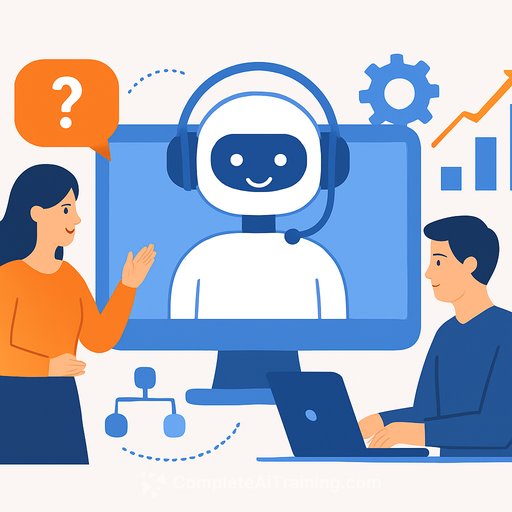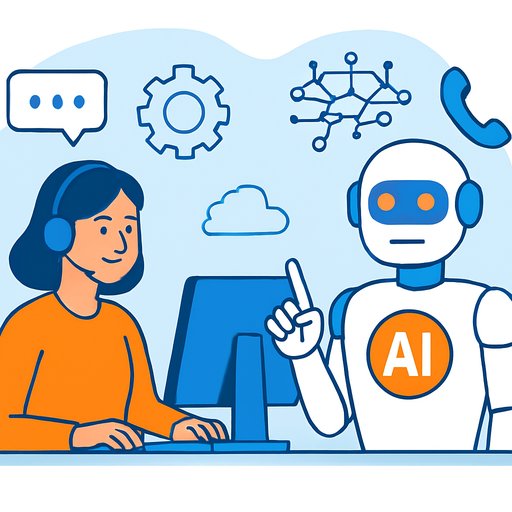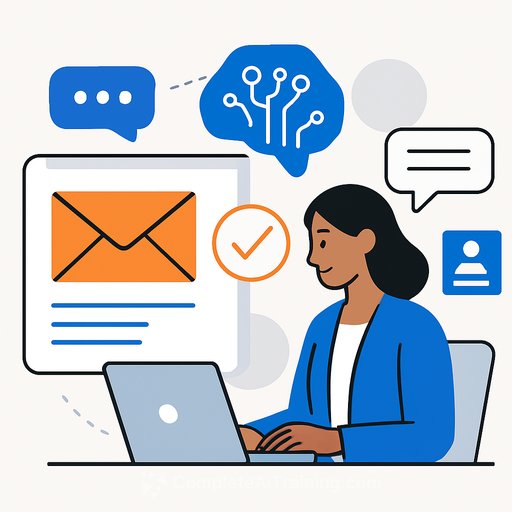AI for Customer Service: Market Outlook and a Practical Playbook for Support Leaders
The AI for customer service market is set to grow from USD 12.06 billion in 2024 to USD 47.82 billion by 2030, a 25.8% CAGR based on MarketsandMarkets estimates. The market window spans 2020-2030, with the agent-augmented segment projected at a 28.4% CAGR. Translation: AI isn't optional if you want faster resolution, lower costs, and stronger CSAT over the next five years.
Why this matters for your queue
- Shorter handle times via automated triage, summaries, and suggested responses.
- Higher self-service resolution with virtual agents that cover routine workflows.
- Cleaner routing that gets the right issue to the right place on the first try.
- More consistent answers, fewer escalations, and less agent context-switching.
What AI actually does in support
- Virtual agents: chat and voice that handle FAQs, status checks, and guided flows.
- Agent assist: draft replies, knowledge lookups, next-best actions, and summaries.
- Intelligent routing: classify, prioritize, and route cases based on intent and sentiment.
- Workflow automation: ticket updates, follow-ups, feedback collection, and case closures.
- Recommendations and diagnostics: propose fixes, articles, or steps based on history.
- Generative responses: natural, context-aware replies with guardrails from your KB and CRM.
Workflow automation: the biggest lift for efficiency
Automating classification, prioritization, and status updates removes repetitive work and speeds up resolution. Tightly integrated systems push and pull data with your CRM, telephony, and knowledge tools, so cases move without manual nudges. The result is fewer touches per ticket, smoother escalations, and lower cost per contact.
Practical 90-day rollout plan
- Weeks 1-2: Audit top 20 intents by volume and cost. Map sources (CRM, KB, chat, email, voice) and label 500-1,000 cases for training.
- Weeks 3-4: Ship automated triage and routing. Add AI summaries and reply drafts in the agent console.
- Weeks 5-6: Launch a virtual agent for 3-5 high-volume scenarios (order status, refunds, password reset, basic troubleshooting).
- Weeks 7-8: Integrate with CRM for case creation, updates, and dispositions. Enable feedback loops on every AI suggestion.
- Weeks 9-10: Expand workflows (follow-ups, closures, NPS/CSAT prompts). Add guardrails for compliance and sensitive data.
- Weeks 11-12: Tune prompts, refine KB articles flagged by deflection gaps, and publish a playbook for agents.
KPIs to track
- Average Handle Time (AHT) and First Contact Resolution (FCR)
- Deflection/containment rate and bot CSAT
- Agent productivity: tickets per hour, after-call work time, time-to-first-response
- Escalation rate and transfer rate
- Backlog reduction and SLA adherence
- Cost per contact (human vs. automated)
Data and integration checklist
- CRM and ticketing: case fields, dispositions, macros, and tags.
- Knowledge base: clean, current, and linked to intents; add missing articles.
- Channels: chat, email, voice, SMS, social, and in-app messaging.
- Security: PII redaction, access controls, audit logs, and retention policies.
- Feedback loops: thumbs up/down, agent overrides, and error reporting.
Risk controls
- Guardrails for facts and tone; keep replies grounded in your KB and policy.
- Clear handoffs to humans; set confidence thresholds for escalation.
- Ongoing evaluation set: monthly test tickets and regression checks.
- Change management: train agents on usage, limits, and how to flag issues.
Vendors to watch
Leading providers include Microsoft, IBM, Google, AWS, Salesforce, Atlassian, ServiceNow, SAP, Zendesk, Sprinklr, OpenAI, Aisera, UiPath, HubSpot, and NICE. Expect broad platform features (routing, bots, analytics) and tight CRM integrations. Pair vendor strengths with your channel mix and compliance needs.
Budget and ROI quick math
Example: 1 million contacts/year at USD 6 per human contact = USD 6M. Deflect 20% with a virtual agent at USD 0.60 per contact and cut AHT by 15% on assisted tickets, and you can save USD 1.2M-1.6M annually, depending on your mix and wage costs. Add gains from faster onboarding and reduced rework to justify the initial build and training.
Where to build skills
Upskill agents and team leads on prompts, workflow design, and QA. If you need a structured path, see curated options by role at Complete AI Training.
Source and further reading
Market figures referenced from MarketsandMarkets. For additional details, see their report page: AI for Customer Service Market - Global Forecast to 2030.
Your membership also unlocks:





